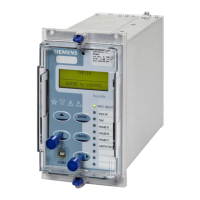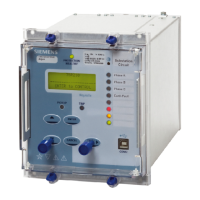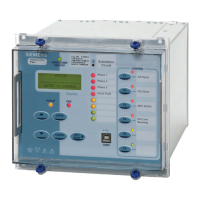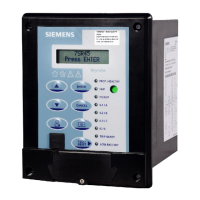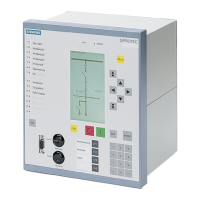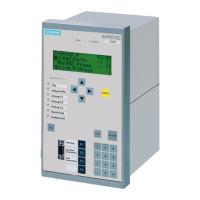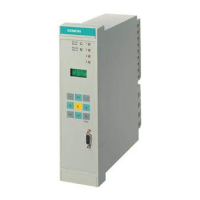7SR18 Description Of Operation
Unrestricted Page 72 of 78 ©2018 Siemens Protection Devices Limited
6.4 Data Storage
6.4.1 General
The relay stores three types of data: relay event records, analogue/digital waveform records and fault records.
Data records are backed up in non-volatile memory and are permanently stored even in the event of loss of
auxiliary supply voltage. The data storage menu contains the settings for the Demand, Waveform and Fault
storage features.
6.4.2 Demand
Maximum, minimum and mean values are available as instruments which can be read in the relay
INSTRUMENTS MENU or via Reydisp.
The Gn Demand Window setting defines the maximum period of time over which the demand values are valid. A
new set of demand values is established after expiry of the set time.
The Gn Demand Window Type can be set to FIXED or PEAK or ROLLING.
When set to FIXED the maximum, minimum and mean values demand statistics are calculated over
fixed Window duration. At the end of each window the internal statistics are reset and a new window is
started.
When set to PEAK the maximum and minimum values since the feature was reset are recorded.
When set to ROLLING the maximum, minimum and mean values demand statistics are calculated over
a moving Window duration. The internal statistics are updated when the window advances every
Updated Period.
The statistics can be reset from a binary input or communication command, after a reset the update period and
window are immediately restarted.
6.4.3 Event Records
The event recorder feature allows the time tagging of any change of state (Event) in the relay. As an event
occurs, the actual event condition is logged as a record along with a time and date stamp to a resolution of 1
millisecond. There is capacity for a maximum of 1000 event records that can be stored in the relay and when the
event buffer is full any new record will over-write the oldest. Stored events can be erased using the DATA
STORAGE>Clear Events setting or from Reydisp Evolution.
The following events are logged:
Change of state of Binary outputs.
Change of state of Binary inputs.
Change of Settings and Settings Group.
Change of state of any of the control functions of the relay.
Protection element operation.
All events can be uploaded over the data communications channel(s) and can be displayed in the ‘Reydisp’
package in chronological order, allowing the sequence of events to be viewed. Events can be selected to be
made available spontaneously to an IEC 60870-5-103, Modbus RTU or DNP 3.0 compliant control system. The
function number and event number can also be changed. The events are selected and edited using the Reydisp
software tool.
6.4.4 Waveform Records.
Waveform records indicate the instantaneous magnitude of each analogue input channel and the status of each
binary channel i.e. binary input, binary output, virtual I/O and LED. The values are recorded at each sampling
point and are sampled at a rate of 1600 Hz.
Each recorded analogue waveform displays an input identifier, minimum value, maximum value and the
instantaneous values at both cursor positions (user variable). Each binary waveform displays the input/output
number and the initiating condition(s) e.g. external input or protection element.
Triggering of waveform storage is configured from the ‘Settings > DATA STORAGE > WAVEFORM STORAGE’
menu. Triggering is initiated from operation of any of the selected protection or control elements.
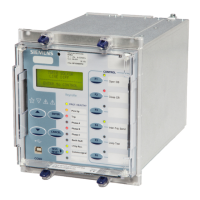
